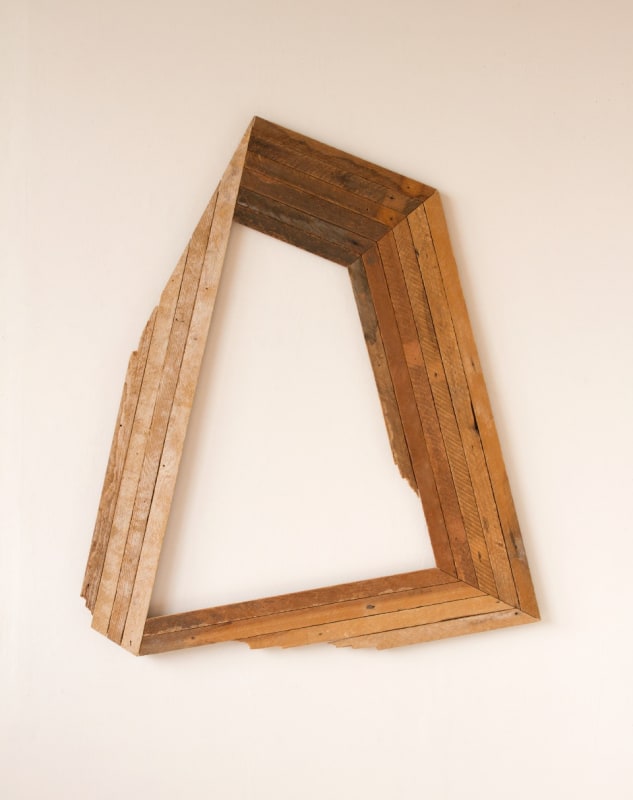Every artist percieves the world through a unique lens, but it took a change of scenery for Andy Vogt's creative vision to crystallize. When he left his longtime Pittsburgh home in 2000 and arrived in San Francisco, the city was undergoing a wave of new construction. Large-scale renovations were creating mountains of debris, which were filled with old lath--strips of wood used to hold plaster to the walls. In a bolt of inspiration, Vogt, who received his bachelor's degree in intermedia from Carnegie Melon University, pulled out a few pieces and began to experiment. What he came up woth resulted in an entirely new direction for his work.
"I see my work as the overlap between drawing and building," Vogt explains, noting that his pieces examine the temporary natures of our structures, both built and imaged. "Where a drawing of a building is its imagined state, the constructed object is real. But what is a building once it's demolished? I think of it as an erased drawing that I'm reassembling." While the mass-produced boards--all 48 inches long--are not valued in the traditional sense, their undesirability pulls Vogt to the material that much more. "The color variation and linear qualities of the that are what gave rise to my idea of working with it," he says. Over time, each board takes on its own individual quality, marked within a wide tonal spectrum ranging from dark to tan to white. Vogt uses those variations to create the illusion of shading, and, as a result, his flat wall installations appear as three-dimensional sculptures.
Each sculpture begins with a postage stamp-size sketch, spurring Vogt's creative thinking. "It's a process of accumulating and digesting forms I see in the world," he explains of the seemingly mundane elements--a staircase, for example, or amunicipal retaining wall thatcurves in an intriguing way--that can provide inspiration. "When
I'm sketching, I try to let it all marinate together and allow the forms todevelop." Although his work started out and continues to include wall sculptures, freestanding pieces and site-specific installations all built with the thin lath strips, the material has inspired him in unexpected ways.
In a process akin to evolution, each series offers insights that lead to innovative new techniques. "The lath has become a kind of alphabet for me," saysVogt. "And like any language, there's always more to say with it." As he was constructing a three-dimensional public installation, Vogt noticed the way the sunlight shonet through the strips creating two-dimensional shadows on the ground. Those shadows led the artist to create a flat piece based on them and eventually, experiment with a series of images using light-oxidized pigment on fabric. And in a recent proposal for a large public art exhibit, Vogt is exploring creating a sculpturemade from sqauer bronze tobing inspired linear quality of the wood.
As such, the artist predicts no immediate end to his relationship with lath, which he finds rife with possibility. "When the demolition happens, the pieces are freed from this almost suspended animation," he says. "Despite their transformation from an old-growth tree to a building product to dumpster debris, they retain a wealth of historical context and aesthetic potential."

